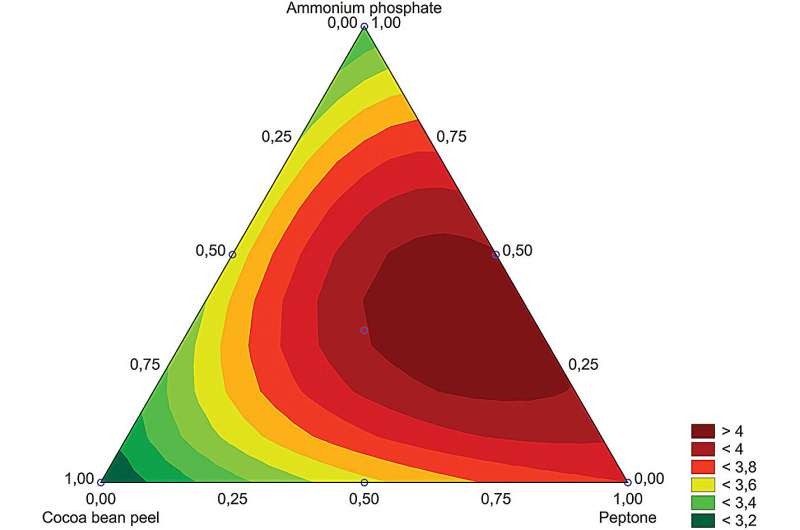This article has been reviewed according to Science X's editorial process and policies. Editors have highlighted the following attributes while ensuring the content's credibility:
fact-checked
proofread
Peach-palm waste and Trichoderma stromaticum: The potential of cost-effective amylase production

Amylases are among the most important biotechnological and industrial enzymes that can be applied in various sectors, such as food, pharmaceuticals, textiles, chemicals, paper, and detergents.
The enzymes' costs come from a range of factors including the quantity produced, the production process, the expense of its recovery, and the degree of purity at which it will be marketed. The use of agro-industrial substrates and microorganisms brings the potential to low-cost enzyme production. Meanwhile, due to the ability to improve physical and chemical resistance to industrial environmental extremes, such as high temperature and pH, as well as carry out different catalytic reactions, microbial enzymes are a favorite to meet the demands of the industry.
A study led by Dr. Andréa Miura da Costa (Universidade Estadual de Santa Cruz) has reported amylase production by Trichoderma stromaticum AM7 using peach-palm waste as substrate. The study is published in the journal Mycology.
A mixture simplex centroid design of the experiment was performed, and the surface response methodology was applied to determine the mathematical model that describes the relation between the response variable and the independent factors (nitrogen source proportions). The team found that the design of the optimum proportion for the final mixture was 70% peptone, 24.3% ammonium phosphate, and 5.7% cocoa bean peel. After the addition of nitrogen sources as peptone and ammonium phosphate, the amylase production increased by 45% by T. stromaticum AM7.
The researchers also determined the pH and temperature optimum for amylase stability, as well as the effects of metal ions and chemical reagents on amylase activity. They found that the biochemical properties of the amylase showed its stability to acidic pH (4.0) and high temperatures up to 50°C–60°C. In addition, the enzyme was little influenced by the presence of ions and denaturing agents, which gives the characteristic of the T. stromaticum AM7 amylase promising for applications mainly in the food sector.
In this innovative research, the fungus T. stromaticum AM7 was efficient in producing amylase using peach palm waste as low-cost substrate in solid state fermentation which simplifies and makes fermentation economically viable for this enzyme production. "The cost-effective enzyme extraction and stable amylase highlight its strong potential in industry applications, especially in food processes," Dr. Andréa Miura da Costa said.
More information: Stephanie Alexandrina Gillet et al, Utilization of Peach-palm waste for cost-effective amylase production by Trichoderma stromaticum : Stability and industrial potential, Mycology (2023). DOI: 10.1080/21501203.2023.2276728
Provided by Tsinghua University Press





















